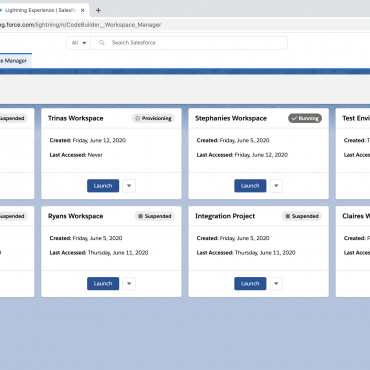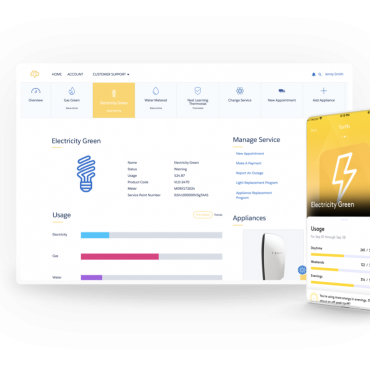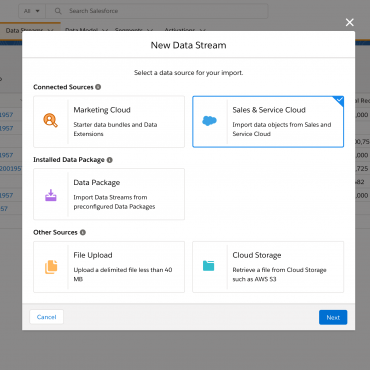Your cart is currently empty!
Author: Franz Malten Buemann
-
Books for your solstice
In the Northern Hemisphere, it gets dark in December.
And worldwide, people buy gifts for whatever holidays they celebrate, and a lot of them are around the corner.
For both reasons, books!
The Carbon Almanac was an Amazon Editor’s choice, a Do Lectures top 100 choice, a bestseller in every country it has been released in and ideal for anyone over the age of ten.
Several organizations are buying a copy of the Almanac for their annual gifts, and if enough of us share enough copies, the world will change. It already is.
Tomorrow and Tomorrow and Tomorrow is a magical romp, a heartbreaking love story and a ton of fun.
The Flavor Equation is a terrific cookbook and also a useful inquiry into taste. The audiobook was free with my membership, but I confess that the hardcover is a lot more useful and a better gift too.
Kafka on the Shore is a mind-bending coming-of-age story, and the audiobook is simply perfect.
All the Birds in the Sky is poignant, fun and it will make you think. A lot.
The Very Nice Box is a lovely book with a message that will resonate.
Whether it’s by candlelight or on a beach, I hope you have a lovely end to the year.
-
Co-CEO Bret Taylor is Leaving Salesforce
In a surprising announcement on December 1, 2022, it was revealed that Bret Taylor, co-CEO of Salesforce, is stepping down after only a year in the role. The question is, what does this mean for the future of Salesforce, and the position as co-CEO? Why… Read More
-
LEGIT EASY MONEY!
https://que123.shop/79935036438736991/ What if you have a chance of a million pounds? You may want to know how strong you are and how much money you can win. Come and participate! ! ! submitted by /u/Bubbly0_0 [link] [comments]
-
How This Peruvian Small Business Creates Ethical Dog Apparel
Seventeen years ago, Patricia Queirolo was driving through the Andes with her family on their way to the Colca Canyon. A college student at the time, she was trying to come up with a business idea for her thesis project. Peering through her window at the beautiful Peruvian landscapes and the various animals grazing, including alpacas and llamas, it hit her: A dog apparel brand.At the time, Patricia had two Westies and was struggling to find good-quality dog sweaters for them. She eventually turned her class project into a reality and opened up Alqo Wasi, or “dog home,” in Quechua, in 2005. Her small business’s purpose would be so much more than just creating chic dog wear, it was also a way for the entrepreneur to spotlight both the Peruvian culture and its people. View this post on Instagram A post shared by Alqo Wasi Dogwear (@alqo_wasi) Sweaters made with the Peruvian culture in mindWhen it came down to actually creating the sweaters, Patricia knew that she wanted to use quality materials that represented Peruvian culture. The Alqo Wasi team ran through a ton of fabric options until they finally reached a consensus to use a luxury blend of organic Pima cotton and alpaca fibers.For Patricia, this specific mixture fulfilled two main purposes. For one, the blend is comfortable for dogs to wear, but can also be easily laundered. But, more importantly, the alpaca fibers were emblematic of Peru’s history, culture, and traditions, something that was important to the entrepreneur. View this post on Instagram A post shared by Alqo Wasi Dogwear (@alqo_wasi) “My first initiative was to find a connection between my Peruvian culture with a good product that could be offered at a wholesale available price … with the best blend of materials,” she said.Alpacas have been very useful to the Peruvian people throughout generations as they’ve relied on them as both transportation and food historically. The animal’s fur, however, has always been regarded for its high quality.“[Alpaca] fiber has been used since the Incas, our ancient culture and our ancestors,” Patricia said. “The highest nobility would use clothes knitted from alpaca.”Initially, all of the designs and styles of the dog sweaters were very much Peruvian, as Patricia wanted her products to represent her heritage. But as the business expanded, they realized that they needed to also expand their style range to cater to a more global audience. Even then, Patricia made sure to instill the Peruvian culture in every product they made.“So we decided to change the designs and try to have a more global taste, but at the same time, accent some of the things that we have here [in Peru]: the manufacturer, the people here that do different roles like dying [the fabric], or knitting the looms,” she said.That’s why Alqo Wasi labels their designs as “glocal” – as their dog sweaters are characterized by both local and global qualities, something that makes their signature product so special.Creating close ties with local artisansEach and every sweater produced by the small business is handmade by Peruvian artisans who dye and knit the fabric themselves. Patricia quickly realized that a major priority of hers was creating new job opportunities for her community.“The purpose [of the business] kind of changed from just making a good product to committing to working with [Peruvian] people and trying to make their future better,” she said.By employing artisans in nearby regions, including Lima, Ayacucho, Puno, and Huancavelica, Patricia can give them stable employment while also ensuring every sweater is made authentically. Over the years, Patricia has become closely involved with these individuals. She’s even been able to support multiple generations of families. View this post on Instagram A post shared by Alqo Wasi Dogwear (@alqo_wasi) “Right now, I’m working with one family,” Patricia said. “And we work with the grandmother, father, mother, their two sons, their cousin, and mother-in-law.”While the artisans’ main job is to weave, knit, and dye the fabrics, Patricia makes sure to bring them in on all design decisions as she’s cultivated a very collaborative environment at Alqo Wasi. While Patricia usually comes up with the initial styles, everyone – including team members in marketing and accounting – has a say as the group works through swatches.Patricia greatly values the artisans’ input here, especially since they’re the ones who ultimately create the sweaters. She sees their relationship as more than just transactional, but like each artisan is a part of her family.“As the owner of the company, I have a lot of pressure — but good pressure. The sense that [my employees] are relying on the sales that our company gives them or the work that we give them. So I think there’s a lot of respect between us, and friendship, and a lot of responsibility that comes with time.”Keeping Alqo Wasi small, ethical, and localWhile becoming certified as a fair trade apparel company is difficult in Peru, Patricia operates Alqo Wasi as such and considers her business, “slow fashion.” Which is why she’s deliberate behind every decision she makes for the brand. View this post on Instagram A post shared by Alqo Wasi Dogwear (@alqo_wasi) For example, not only is their sweater blend representative of Peru, but it’s good for the planet, too. Organic Pima cotton is made without any GMOs in Peru and is harvested on land free of chemical fertilizers. Similarly, the alpacas in the Andes are typically never raised or harmed for their fur. The animals get sheared once a year for health reasons, where the fiber is collected. Their fur causes less pollution to the environment compared to other materials, and Alpacas themselves have a light carbon footprint.“The alpaca is a very kind animal for the planet,” Patricia said. “They say [their fiber] is more sustainable than cashmere.”Patricia is also not interested in expanding the business if it means harming the quality of the product, or her employees. While Alqo Wasi has been offered to create white-label clothing for other brands, they’ve ultimately realized that kind of work doesn’t connect back to their mission.“I think we always consider [white label work] and think, ‘oh, maybe we need this.’ You know, to sell more
. But in the end, I came to the conclusion that I prefer to grow slowly… I just don’t want to put more pressure on me and my employees and I don’t want to give them more work than what they can do.” View this post on Instagram A post shared by Alqo Wasi Dogwear (@alqo_wasi) Rather than growing the business exponentially, Patricia is happy with where Alqo Wasi is now and believes there is immeasurable value to keeping things as they are. It’s not that she doesn’t want her business to grow, but that she prefers a slower, more steady growth. She sees that each year the brand is gaining more and more recognition, while still maintaining the quality of the product and the happiness of their employees.🖊️Patricia’s mentality surrounding small businesses is shared by other entrepreneurs, as well. Check out our Small Business, Big Lessons podcast episode on why some businesses intentionally choose to stay small.“We’re a small business, and we’ve been a small business from the day we started,” Patricia said. “We want to keep it small.”By limiting the size of the business, Patricia can ensure that she’s never compromising Alqo Wasi’s core goal – to uplift the Peruvian people, while also creating products that illustrate the country’s culture and traditions. In this way, Patricia ensures that she has the best interest of her employees and hometown at heart. Interested in how other entrepreneurs run their businesses on their own terms? Check out our podcast Small Business, Big Lessons where we highlight successful small businesses that carved their unique path. -
How to Buy Contact Center Software: A Guide
Call center managers know that choosing effective software is key to success. With the right tools on board, your contact center can increase agent happiness and productivity, while hitting your KPIs and running an efficient operation that scales with ease.
But how do you buy the call center software and choose from the countless options in a very competitive marketplace? For starters, today’s contact centers require flexible software that supports omnichannel integrations. Tools enhanced with artificial intelligence are a must these days, along with IVR capabilities, smart routing, real-time analytics, and immediate access to caller information and context for agents.READ OUR FULL SOFTWARE PROCUREMENT GUIDE:
How to Buy Contact Center SoftwareSome features may come bundled with Call Center Software as a Service (CCaaS) packages. And if you need more incisive, effective tools you can add specialized, third-party software like Fonolo’s Voice Call-Backs, which eliminate hold-time for your callers.
To understand your software needs, you’ll need to conduct a full audit and ask yourself what problems you’re trying to solve. For a comprehensive overview of the topic, check out our most recent report on How to Buy Call Center Software. We’ll help you piece together the puzzle as we unpack the options: identifying game-changing features, discussing procurement, and shining a light on industry trendsetters who are breaking new ground.
How to Buy Contact Center Software
Cloud vs. On-Premises Software
One of the first questions you’ll ask is where you should host your software. As the name suggests, the main difference between cloud and on-premises software is the location where the software lives. If your products are hosted on-premises, they are installed on your business’ own computers and servers. This requires IT support and ongoing maintenance from your tech support team. Cloud software is accessed through a web browser and hosted “in the cloud” or on your vendor’s server in a remote location.
There are pros and cons to both models, including cost, maintenance requirements, and flexibility. It’s important to understand what each option entails before you decide which worksDID YOU KNOW:
The Contact Center Software market size is expected to grow from US $35.2 billion in 2022 to US $93.7 billion by 2027What is Omnichannel Functionality?
Put simply, software with omnichannel functionality lets your customers move seamlessly across all inbound channels including phone, chat, email, and social media, while their service journey is captured and shared with agents in real time. Integrated services mean callers don’t have to repeat their questions, re-explain why they’re calling or undergo multiple security checks throughout their customer service journey. (This is important! Up to 33% of callers say that repeating their information is their biggest customer service pain point.)
This means a customer’s question can be easily escalated from a text-based chat to a voice call without missing a beat. Fonolo’s Visual IVR helps achieve this by gathering information and offering customers a call-back at a convenient time. All the relevant customer history will follow the conversation, so the customer doesn’t have to repeat their information multiple times.
Omnichannel integration has quickly become the industry standard and is appreciated—and expected—by today’s customers.
What is Call Center as a Service Software?
These robust software systems integrate many of the features and tools that all contact centers need. Usually cloud-based, these systems offer “software as a service”, which refers to a purchasing model where software is licensed on a subscription basis and remotely hosted, though many providers also offer on-premises solutions.
CCaaS tools and features:Interactive Voice Response (IVR) and Visual IVR allow customers to provide information before speaking to a live agent.
AI-based customer sentiment analysis notices keywords like “late order” or “refund” to help direct calls.
Automatic Call Distribution (ACD) routes the call to the correct agent.
Voice Call-Backs allows the customer to schedule a convenient call-back if all agents are busy.
Business software integration shows agents the customer’s entire service journey and helps them address their issues thoroughly.
Analytics track KPIs to better understand customers’ needs, monitor efficiencies, and identify roadblocks.
Workforce management tools (WFM) promote team productivity and help with smart scheduling, workload distribution, and trend forecasting.Many of these features are also available as specialized software—like Fonolo’s Voice Call-Backs—offering enhanced functionality for better contact center solutions.
READ OUR FULL SOFTWARE PROCUREMENT GUIDE:
How to Buy Contact Center SoftwareThe post How to Buy Contact Center Software: A Guide first appeared on Fonolo.
-
All the marbles (and quick money)
The problem with winning all the marbles is that the game is then over. And owning all the marbles is not really worth the effort if it means no one else has a chance going forward.
And quick money? It pales in comparison with money earned over time for a job well done.
-
6 Marketing Goals to Keep Your eCommerce Leads Engaged After the Holidays
Fostering engagement with prospects isn’t always easy. eCommerce brands need to know who their ideal customer is, what they need, and how to position their messaging in alignment with prospects’ preferences. The good news? With eCommerce conversion rates 0.65% higher during the holiday season, brands have access to invaluable lead information they can use to…
The post 6 Marketing Goals to Keep Your eCommerce Leads Engaged After the Holidays appeared first on Benchmark Email. -
How to Utilize Lead Nurturing and Lead Scoring for Your Shopify Store
submitted by /u/Proof_Assistance_824 [link] [comments]
-
I need to reach 100-1000 people
I am planning to make a lottery so I need to reach alot of people. submitted by /u/PeteTheShowMan [link] [comments]
-
How to request Testimonials via your newsletter [+ Email Templates]
submitted by /u/GuillaumeBrdet [link] [comments]


